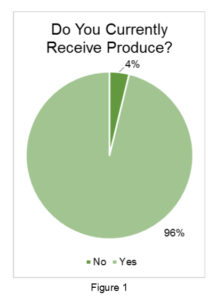- About Us
-
-
About Us
-
-
-

-
“This is an opportunity for our students to provide more for their families, for our students who may not have access to the resources that others do. It’s a blessing for the students who need that support.”
Randall Ward, Director of Student Services, Capital Community College in Hartford
-
- Find Help
- Ways to Give
- Volunteer
- Donate
- Partner Programs
News
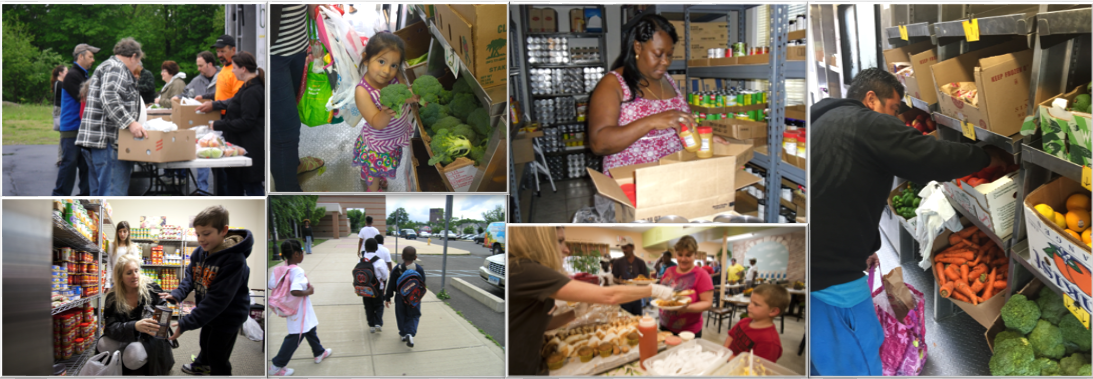
Programs and Produce Survey
13/Apr/17 / 13:32
Member Programs Have Little Issue Moving Produce
They Want More, Especially from Local Farms
We surveyed 300 member programs last fall to better understand how fresh produce moves through our network. More than 130 programs responded. The results of the survey indicate that more produce would be readily absorbed by the system. Freshness, quality, variety and predictability are important factors to those who reported sourcing and distributing produce.
The Con necticut Food Bank Farm-to-Pantry Program connects member programs with Connecticut farmers in their area that wish to donate produce in order to support a robust food system in Connecticut that offers access to fresh, nutritious food, while reducing waste. In Fiscal Year 2016, Connecticut Food Bank partner programs moved 4,910,948 pounds of fresh produce, or about 30% of their total pounds moved. Of that, 500,288 pounds of fresh produce came from local farm donations. To better understand the needs of our member programs and increase program participation, the Connecticut Food Bank surveyed 300 of its member programs. This report summarizes the trends and findings of the 132 programs that responded.
necticut Food Bank Farm-to-Pantry Program connects member programs with Connecticut farmers in their area that wish to donate produce in order to support a robust food system in Connecticut that offers access to fresh, nutritious food, while reducing waste. In Fiscal Year 2016, Connecticut Food Bank partner programs moved 4,910,948 pounds of fresh produce, or about 30% of their total pounds moved. Of that, 500,288 pounds of fresh produce came from local farm donations. To better understand the needs of our member programs and increase program participation, the Connecticut Food Bank surveyed 300 of its member programs. This report summarizes the trends and findings of the 132 programs that responded.
Nearly all programs responding reported receiving produce (Fig. 1), but only 36% get that produce from a farm donor.
Although 64% of responding programs do not currently work with farms, 84% said they would like to (Fig. 2).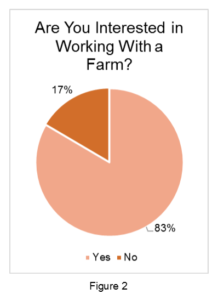
As seen in Figure 3, most programs receive produce through multiple channels. Many work with local retail stores and growers, 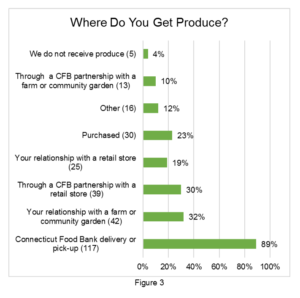 and quite a few purchase to ensure consistency and variety, but nearly all (89%) cite the Connecticut Food Bank as at least one source of their fresh produce. In fact, the food bank is the largest single source of produce, supplying 55 programs, either as a direct or mediated single source, or as direct source with a Connecticut Food Bank mediated partnership as a second source.
and quite a few purchase to ensure consistency and variety, but nearly all (89%) cite the Connecticut Food Bank as at least one source of their fresh produce. In fact, the food bank is the largest single source of produce, supplying 55 programs, either as a direct or mediated single source, or as direct source with a Connecticut Food Bank mediated partnership as a second source.
Figure 4 shows that most programs (81%) receive produce regularly – ranging from multiple times per week to every other week. In fact, 73% of programs surveyed said they did not have any issues moving produce relating to their clients’ interest.
For programs, most problems moving produce are logistical – where to source, how to secure good quality and good variety, how to store and transport – rather than related to client interest or knowledge (see Fig. 5). The majority cited storage (51%) and refrigeration (43%) as their biggest barriers to moving produce.
 Many programs said they were interested in working with a farm if delivery were an option and 27% of responders listed transportation as one of their biggest barriers to obtaining more produce. However, more programs cited quality of produce (30%) and the quick expiration of produce(29%) as bigger barriers than transportation. Comments suggest that the Connecticut Food Bank has gotten much better about delivering good quality produce, but that it is far from consistently perfect, and programs are worried about quality in relation to food bank and farm donations.
Many programs said they were interested in working with a farm if delivery were an option and 27% of responders listed transportation as one of their biggest barriers to obtaining more produce. However, more programs cited quality of produce (30%) and the quick expiration of produce(29%) as bigger barriers than transportation. Comments suggest that the Connecticut Food Bank has gotten much better about delivering good quality produce, but that it is far from consistently perfect, and programs are worried about quality in relation to food bank and farm donations.
This raises an important question: How can the Connecticut Food Bank ensure programs receive good quality excess and number 2s (product that is
good to eat, but does not meet retail market aesthetic standards), especially from farmers who may provide produce directly to agencies  outside the Connecticut Food Bank department?
outside the Connecticut Food Bank department?

Figure 6 reveals that most programs surveyed rely on volunteers to transport produce. The Connecticut Food Bank recognizes that programs tend to struggle with labor resources, opening days and hours and reliable transportation. This, coupled with the perishable nature of fresh produce, drives 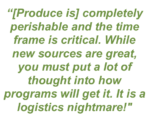 home the struggle programs encounter as they work to source and distribute produce.
home the struggle programs encounter as they work to source and distribute produce.
Overall, most programs (111 of 132 surveyed) expressed interest in working with a farm for greater access to fresh, healthy produce, possibly more often. Out of those who were not interested in working with a farm, eight programs stated their own existing farm partnerships, while seven cited logistical barriers like transportation, timing and storage.
A number of programs also mentioned the significance of culturally appropriate options. Suggestions include an educational class for pantry organizers, a list of culturally appropriate foods and increased “availability of some root items for Hispanic audiences.”
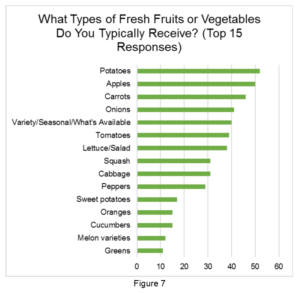 Programs receive a large variety of produce from their various sources. As seen in Figure 7, Connecticut Food Bank staples like potatoes, apples, carrots and onions represent the majority of produce. Many programs expressed a preference for even more variety, with nearly 40 programs stating they go for seasonal produce and whatever is available. The Connecticut Food Bank has a large variety of seasonal produce with a big uptick in availability during the summer, fall and early winter months.
Programs receive a large variety of produce from their various sources. As seen in Figure 7, Connecticut Food Bank staples like potatoes, apples, carrots and onions represent the majority of produce. Many programs expressed a preference for even more variety, with nearly 40 programs stating they go for seasonal produce and whatever is available. The Connecticut Food Bank has a large variety of seasonal produce with a big uptick in availability during the summer, fall and early winter months.
Although 73% said client interest posed no issue in moving produce, many highlighted the importance of recipes and other educational resources.
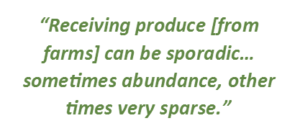
Farm Partnerships: Most programs that work with a farm cited a positive relationship, with 94% reporting that their farm partnerships were going very or somewhat well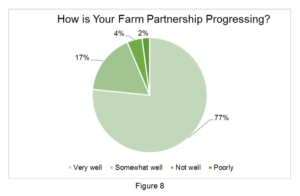 (see Fig. 8). The majority of the issues with farm partnerships were due to the unpredictability of produce due to factors like seasonality and weather impacts on crops.
(see Fig. 8). The majority of the issues with farm partnerships were due to the unpredictability of produce due to factors like seasonality and weather impacts on crops.

 A certain amount of unpredictability is inevitable, too, when soliciting donations from farmers, since most are, first and foremost, businesses that need to sell as much as possible in order to survive.
A certain amount of unpredictability is inevitable, too, when soliciting donations from farmers, since most are, first and foremost, businesses that need to sell as much as possible in order to survive.
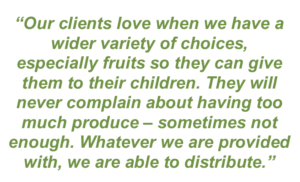 Fresh, nutritious food signifies an important, cost-effective way to improve people’s health, well-being and educational outcomes, specifically for those in vulnerable populations like children, seniors, veterans and low income populations. Despite the challenges, barriers and logistical hurdles involved in moving fresh fruits and vegetables through the Connecticut Food Bank network, member programs move a significant amount of produce. Programs value freshness, quality and variety, and most are interested in working with a farm to increase accessibility to quality fresh produce.
Fresh, nutritious food signifies an important, cost-effective way to improve people’s health, well-being and educational outcomes, specifically for those in vulnerable populations like children, seniors, veterans and low income populations. Despite the challenges, barriers and logistical hurdles involved in moving fresh fruits and vegetables through the Connecticut Food Bank network, member programs move a significant amount of produce. Programs value freshness, quality and variety, and most are interested in working with a farm to increase accessibility to quality fresh produce. 
The Connecticut Food Bank has succeeded in increasing the amount of produce it helps place in the hands of families that need it, but the work is far from over. This survey demonstrates the need for growth in the Connecticut Food Bank’s capacity to work with farmers and programs to move more produce to Connecticut residents in need. This growth requires greater infrastructure, including the volunteers, transportation and quality control to make it easier for programs to handle produce.
Download a copy of the report here.







